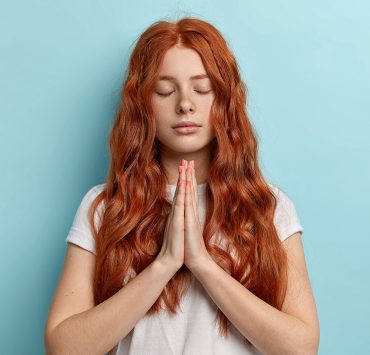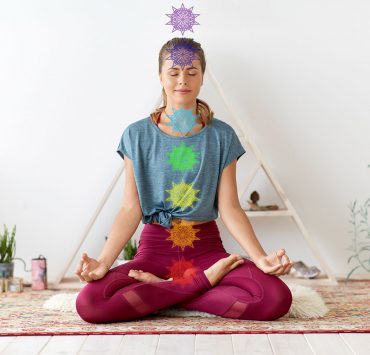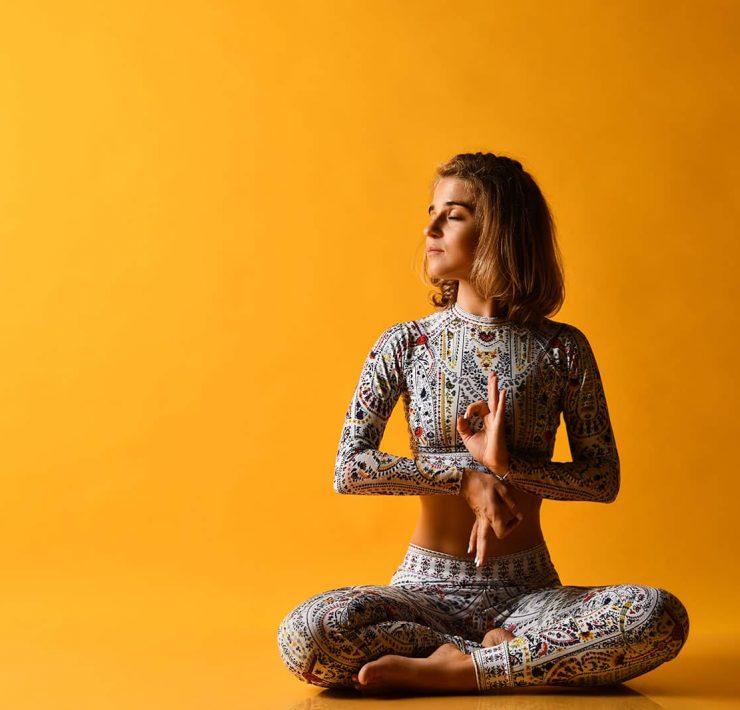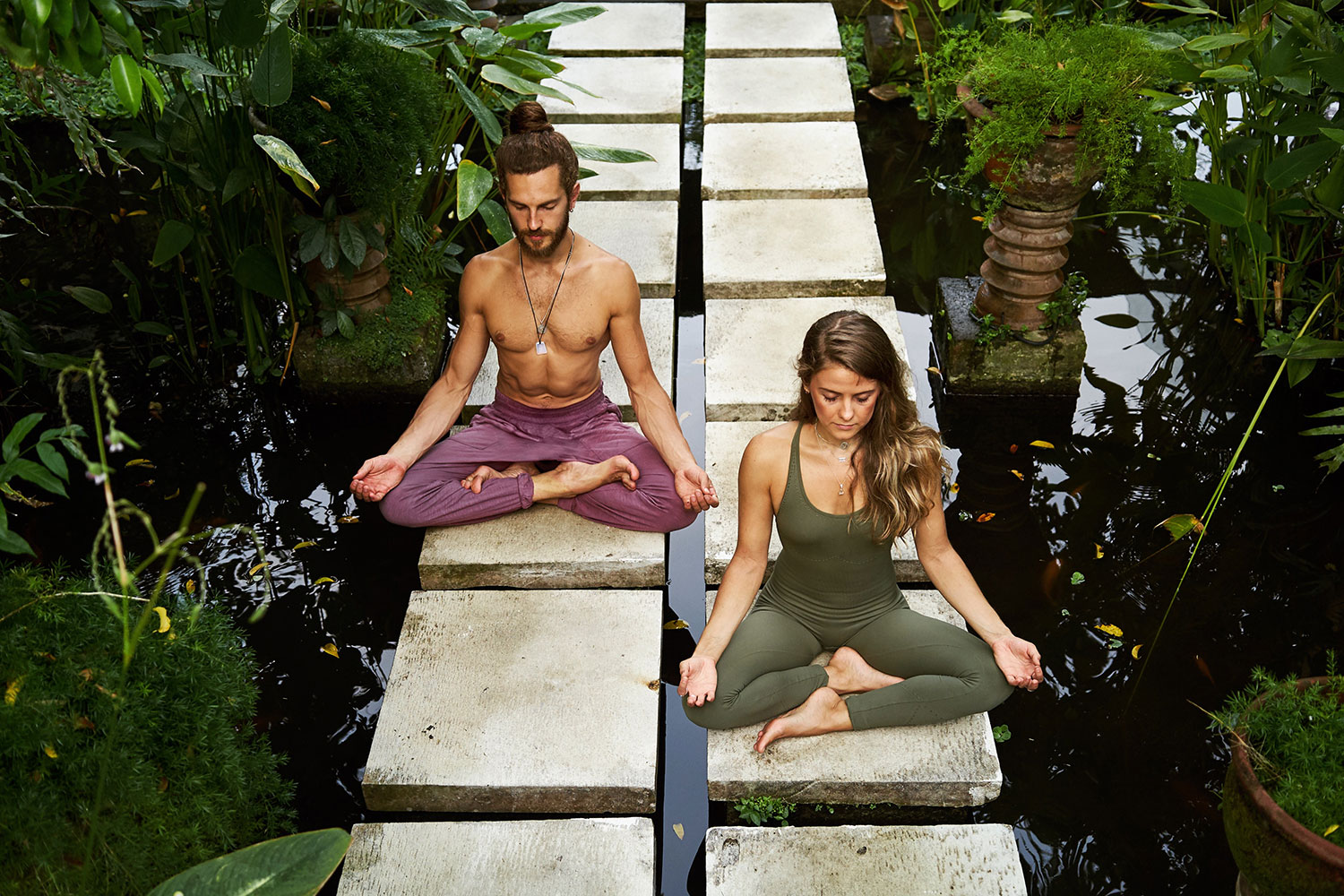
Former nutrition specialist Alexandra Mackenzie knows what it means to…
Vedic meditation is an ancient practice that originates in the Vedas. The Vedas are a group of ancient texts from India that are over 5,000 years old. This practice calms the body and mind through two 20-minute sessions where practitioners sit quietly and recite a mantra in their head. How amazing is it that something that is 5,000 years old is still popular today all around the world?
Today, Vedic Meditation continues to be very popular because it is easy to learn. As it is currently practiced, it is not tied to a particular religion or spiritual belief, so it is very inclusive to all. It can be done anytime, anywhere, by anyone!
What is Vedic Meditation

There are so many different types of meditation practices. The key is trying different types and seeing which style resonates with you. Vedic meditation is a great place to start because it is very beginner-friendly.
Vedic meditation is a form of meditation that uses a mantra to calm the mind. A mantra is a word or sound that is repeated out loud or in your head to help with concentration during meditation.
The best way to learn this type of meditation is from a teacher. Your teacher will give you your own personal mantra to use during meditation. The mantra will be repeated in your head as you meditate.
Vedic meditation is done for 20 minutes twice a day. Usually once in the morning and once in the afternoon or evening. Avoid doing the meditation right before bed. It can bring energy to your body which can make it difficult to fall asleep after.
There are many benefits of Vedic meditation. With a consistent practice, Vedic meditators can experience positive effects like decreased stress and anxiety to increased energy and creativity.
The History of Vedic Meditation
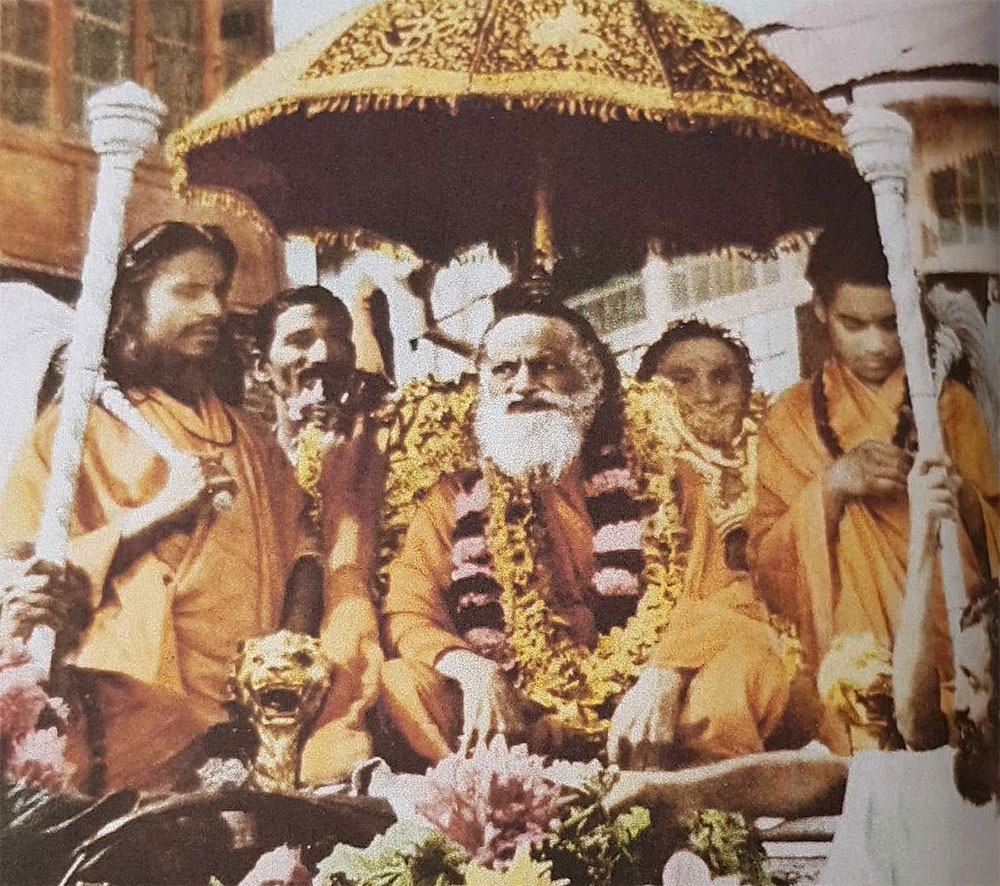
Vedic Meditation is over 5,000 years old and comes from the ancient Indian texts, the Vedas. There are four Vedas. These are the oldest scriptures of the Hindu religion. According to The Meditation Trust, the Vedas predate the modern religious era.
Meditation Trust goes on to describe the word Veda as meaning science, knowledge, or truth. These concepts come up in the mind and through chants in Vedic Meditation. The practice was passed on throughout the years. It was restored in the 20th century by Swami Brahmananda Saraswati.
Swami taught his student Maharishi Mahesh Yogi about Vedic meditation. He wanted to spread the Vedic meditation practice to the whole world, beyond India. Maharishi called this practice “transcendental meditation.” Today, transcendental meditation, or TM, has become very popular across the world.
Meditation is an important aspect of the yoga practice. Patanjali’s Yoga Sutras, define an 8 Limb Path. This path includes different steps that lead to Samadhi. Samadhi is defined by Stay Namaste Living as “the state of awareness that has been described as pure bliss, liberation or enlightenment.”
One of the limbs is dhyana which is meditation. Before reaching the limb of meditation, there are two other limbs that help you reach this state of pure concentration and relaxation. Pratyahara is the limb where you turn your senses from the outward to the inward. Dharana is the limb of concentration.
Pratyahara is practiced many different ways. Some might like closing their eyes and listening to music, others may enjoy doing a full-body scan where they tense and release their muscles. Another option is closing your eyes and imagining yourself in a happy place. This limb can look different for everyone. Turning your senses inward is a very personal practice.
Dharna is the limb of concentration. Like Pratyahara, this can look different for everyone. Some people like to keep their eyes open and gaze at a point or an object in front of them. This object could be a spot on the yoga mat, a yoga block, a candle, etc. Others feel more concentrated with their eyes closed and choose to turn their concentration inward.
Once the body can experience relaxation and concentration, it can dip into dhyana or meditation. The important thing to remember is that meditation is a practice and is not always perfect. There will be some days where concentration and relaxation are difficult. On other days it may seem easier. Let those feelings come and go without judgment.
A lot of celebrities practice transcendental meditation. This includes Katy Perry, Jerry Seinfeld, Jennifer Aniston, Kate Hudson, Paul McCartney, Clint Eastwood, Mick Jagger, and more! See what has all the celebrities coming back for more and try this practice yourself!
Benefits of Meditation
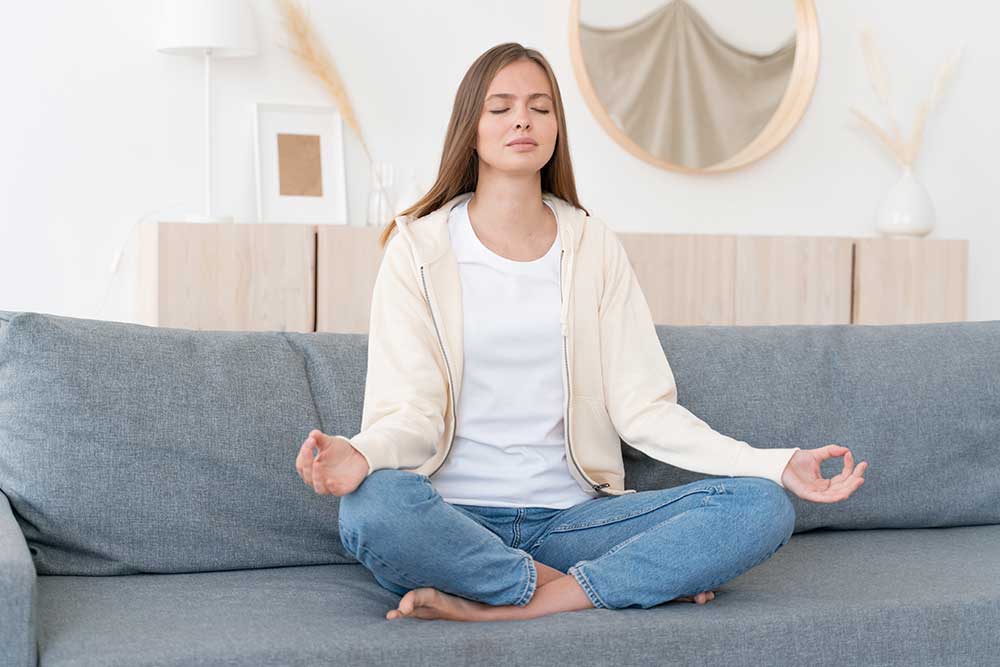
Meditation is an amazing practice because it has so many benefits to the human mind and body. The best part? Anyone can enjoy practicing meditation! You don’t have to be a yogi or a Buddhist monk to enjoy the art of meditation. You can receive the benefits of practicing daily in your own living room!
AstroYogi describes the many benefits of the Vedic practice including reducing anxiety and stress, boosting cognitive ability, increasing creativity, and getting better sleep. YogiApproved.com states that Vedic meditation can give you more energy, increase productivity, and even reduce irrational fears.
The benefits of Vedic meditation are so helpful in everyday life. Meditating upon waking up is recommended because it will set the tone for the rest of your day. You will notice yourself feeling calmer and more productive as you complete your daily tasks.
Meditation can also help people who are struggling with mental health issues. This includes things like anxiety and phobias. The practice is recommended by many doctors and psychologists as a tool to use to help work through tough times.
It is important to note that these benefits do not come after one meditation practice. It is critical that you establish a consistent, daily practice to experience the benefits of Vedic meditation.
What You Will Need to Follow This Tutorial

Vedic meditation is such a great practice because it can be done from anywhere at any time. Find a comfortable place to sit with back support. You don’t have to worry about sitting cross-legged with perfect posture. It is more important that you are comfortable.
Meditation is difficult for many people because they feel like they have to sit cross-legged with a straight back. Instead of being able to relax and meditate, they are instead focused on aches and pains in the body. So, prop yourself up any way that feels good and relax.
If possible, find a quiet spot to meditate. If not, that’s ok! You can learn to meditate amid noise and chaos, although it is a bit more difficult. If you are a beginner, try to start by practicing somewhere quiet.
The last thing you will need is a stopwatch. You can use the app on your phone or your watch for this. You will learn more about how to use this tool during the step-by-step instructions.
An optional item to also bring to your meditation spot is a journal. It can be nice to write down thoughts and feelings post-meditation. A meditation journal is nice to revisit from time-to-time to learn and reflect.
Step-by-Step Instructions
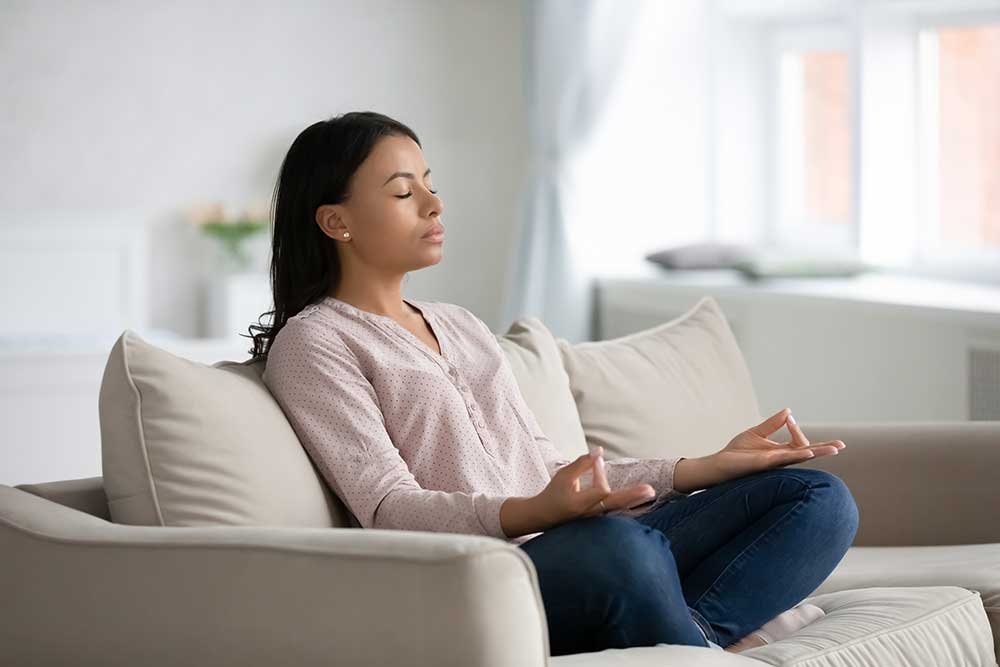
- Set aside two 20-minute blocks out of your day to meditate. Try once when you first get up in the morning and a second session later in the afternoon. Avoid meditating right before bed. Meditation increases energy and might make it difficult for you to fall asleep.
- Find a comfortable place to sit upright. Make sure you have back support. You can sit on a couch, propped up in bed, seated on a cushion against the wall, etc. The goal is to be comfortable so that you aren’t distracted by aches and pains as you start to meditate.
- Set the stopwatch on your phone. As you meditate, you can check in on the time throughout to know when 20 minutes are up. Avoid setting an alarm because this is a jarring way to come out of meditation.
- Close your eyes and draw awareness to your inhales and exhales. Turn your senses inward.
- Begin to say your mantra to yourself in your head. If you don’t have a personal mantra given to you by a teacher, meditation expert Light Watkins recommends using the mantra “ah-hum.”
- Avoid trying to control your thoughts. Let them come and go. If you notice yourself getting distracted, return to your mantra.
- When you feel the need, check the stopwatch. Aim for about 20 minutes. It is ok if you run a bit over.
- Sometimes you may experience physical sensations from meditation. This includes things like getting hot, cold, upset, or happy. These feelings are all completely normal and your body’s way of releasing stress and emotions.
- When the time is up, bring awareness back into the room. Gently move the body, slowly blink open the eyes. Take a minute to give yourself gratitude and appreciation.
- Plan when you will meditate again. The key to receiving benefits from Vedic meditation is a consistent practice. It is impossible to practice once a week or every few days and expect to feel calmer and more relaxed. For the practice to change your life, it needs to be every day and consistent.
- Keep a journal. Note what thoughts and feelings came up during meditation. Write down any physical or emotional sensations that you feel during the practice. Your journal can serve as a meditation log for you to look back at as time goes on as a practice of self-reflection. In addition, write down the benefits you are experiencing throughout the day. This allows you to see how meditation is transforming your life.
If you are a beginner going through these steps for the first time, additionally take the time to read “Bliss More” by Light Watkins. Light provides a detailed guide for how to meditate. He calls his practice the “E.A.S.Y approach” because it is so user friendly and can work for everyone. The best way to learn Vedic meditation is through a teacher. If that is not accessible to you, Light Watkins book is a wonderful resource to those just starting their meditation journey.
Try Vedic Meditation Today, You Won’t Regret It!
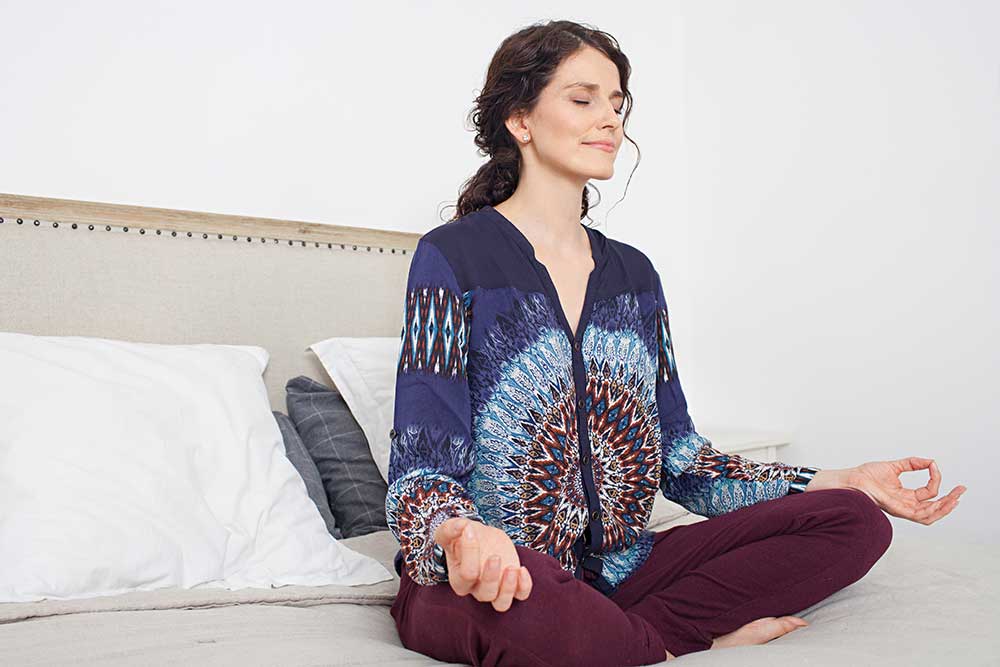
One of the main reasons Vedic meditation has become so popular is that it can work for everyone! It can be done at any time and anywhere. You don’t have to be a seasoned yogi or a meditation expert to enjoy the benefits of the practice.
Make it a goal to start a consistent, daily meditation practice of 20 minutes, two times per day. Forming this habit will allow your body and mind to start seeing some of the wonderful benefits of the practice.
Over time, meditation can lead to reduced anxiety, increased cognitive ability, increased creativity, and more restful sleep. Not only can this practice make you physically feel better, but it can also make you feel better emotionally as well.
Vedic meditation is a great tool to have in your wellness toolbox. It is an invaluable practice for those looking to bring a deeper sense of calmness to their daily lives. Start your Vedic meditation journey today by scheduling a 20-minute session to sit quietly and meditate.
What's Your Reaction?
Former nutrition specialist Alexandra Mackenzie knows what it means to support the body and mind through food. She’s passionate about sharing her wealth of knowledge with anyone willing to listen.






